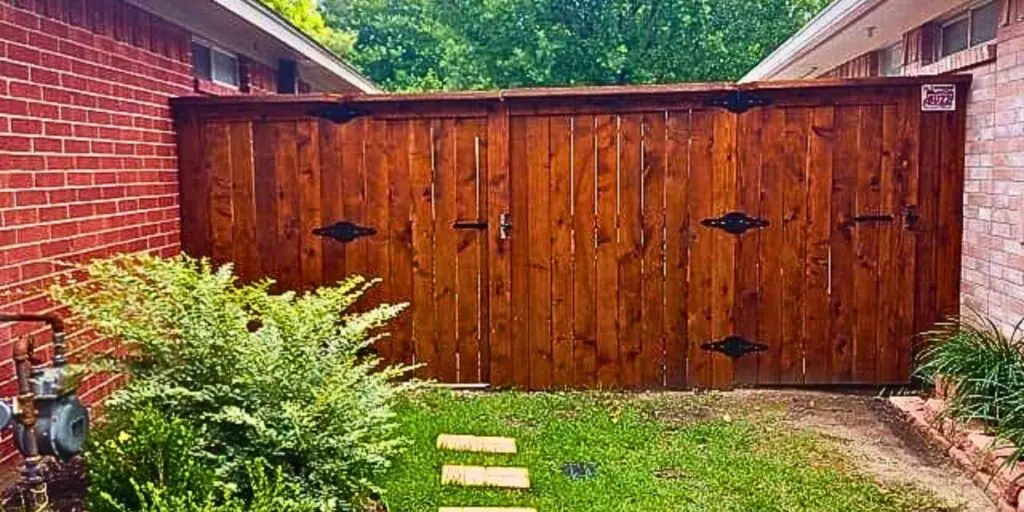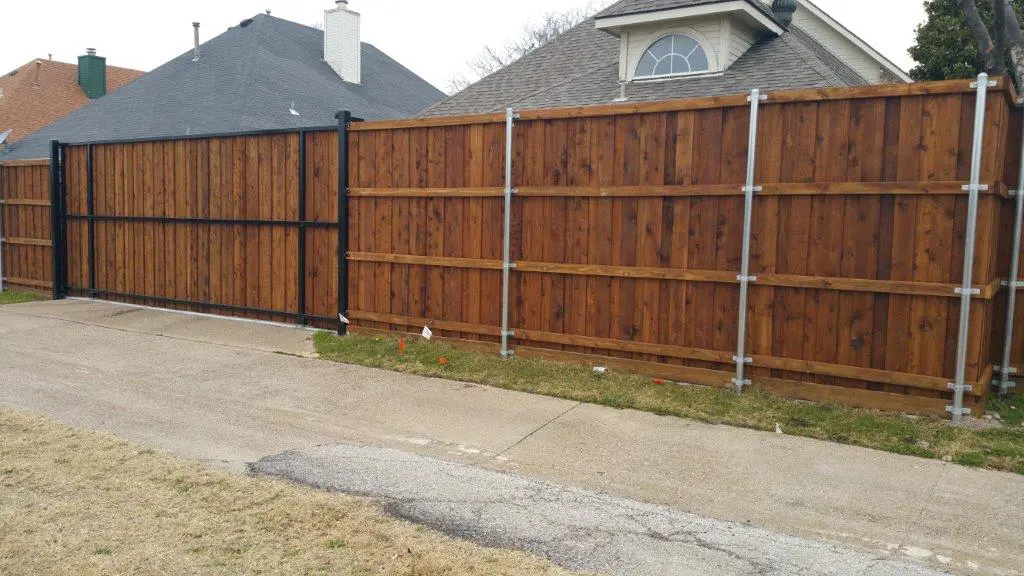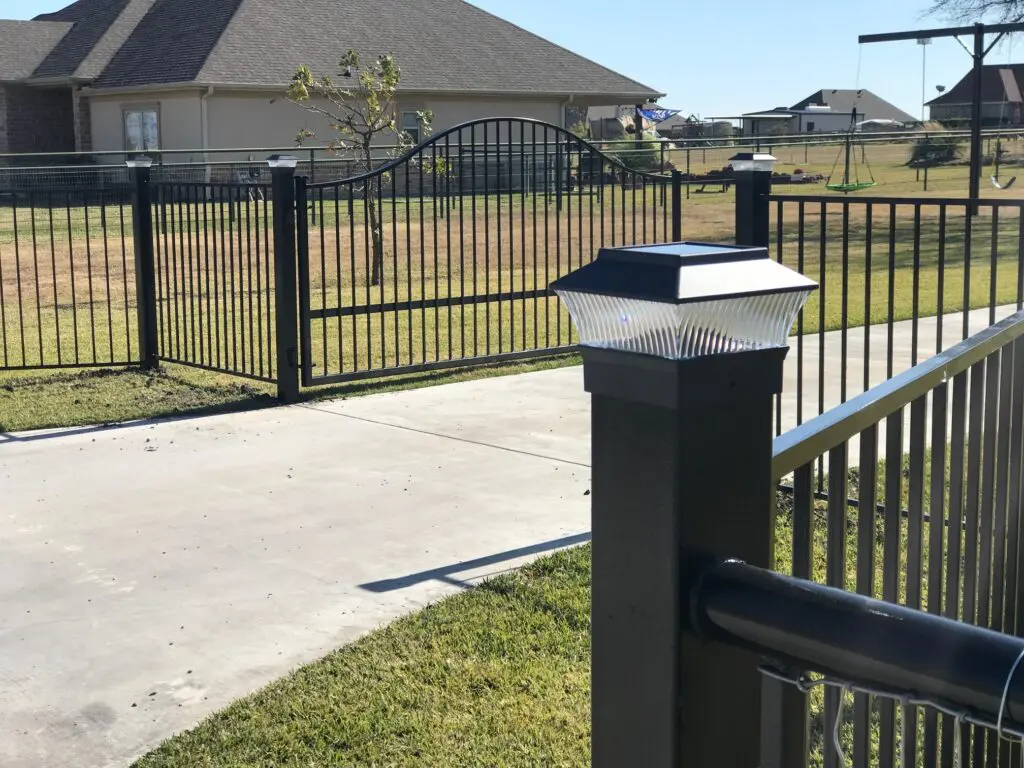At Buzz Custom Fence, we love pets and want to keep them safe. And while “pets” can mean anything from your goat to your iguana, this article will focus primarily on dogs. America’s approximately 88.3 million cats are too wily for fences – unless you’re zoned for a 10-foot-plus fence or can add a roof – but the 74.8 million dogs can mostly be contained. As for the 142 million freshwater fish owned by Americans, well, we’ll leave that one to the aquarium manufacturers.
Containment
There are lots of good reasons to contain your pet, even if he or she is a really, really, really good dog. Keeping your dog inside the fence equals keeping your dog safe. Loose dogs can be hit by cars. If your dog isn’t spayed or neutered, they can quickly find a way to add to pet overpopulation. More aggressive dogs get themselves into trouble by attacking a person, cat or another dog. As a responsible pet owner, you can save your dog from these transgressions and heartache.
Height is a primary consideration. If your dog is young, strong, and has longer legs than a corgi, a six-foot fence is usually a good option. It’s best to start with a high fence than to add on. Adding incrementally higher fencing is a great way to teach your dog to jump higher. Extremely athletic dogs might require a “roof,” a section of fence at the top that turns inward at a 45 or 90-degree angle. Even if your dog is generally mellow, something extra-exciting might trigger a latent ability to jump over the fence.
Many industrious dogs focus on tunneling out. If you have a digger, burying chicken wire beneath the fence should help. Hyper-determined dogs might require paving slabs buried beneath the perimeter.
Don’t make it easier for your dog to escape by stacking wood or placing a doghouse near your fence. Trees can also enable climbers to make it up and over.
Consider the chew factor. Many types of dog enjoy chewing, and they will make short work of a lightweight fence. Determined chewers can even destroy plastic-coated metal chain link. These dogs might require a solid wood privacy fence.
Keeping Varmints Out
As well as keeping your dog in, a fence can keep many varmints out.
Unfortunately, many small dogs and cats fall prey to coyotes. Coyote rollers are round tubes of aluminum installed at the top of your fence. When a coyote tries to climb your fence, the roller makes it lose its footing so it falls off. You can buy one from a company or make a DIY version from a PVC pipe.
Dognappers are an especially sneaky and vile predator that might try to infiltrate your yard. If you have a pedigreed dog, you could be at risk. A privacy fence is your best bet for blocking the view of your gorgeous show dog.
The occasional malicious jerk can also endanger your pets. Some folks are not right in the head, and might want to tease, harm or steal your dog just for the heck of it.
You also want to keep neighborhood dogs out of your yard, unless they’re over for a play date. Uninvited dogs could fight with your own pets, dig in your garden or leave unwanted tokens of their visit.
Visibility
While at first it seems like you’re doing your dog a favor by providing a window on the world, some canines get overstimulated. Your dog could feel frustrated that all these fascinating people, cats, squirrels, bicycles, cars and other dogs are passing and he or she can’t interact with them. This leads to barking and other undesirable behaviors. Easily stimulated dogs will benefit from privacy fences. Then they can focus on being content in their own yard, rather than face a grass-is-always-greener-on-the-other-side-of-the-fence ordeal.
If you opt for a privacy fence instead of chain link, make sure the pickets are close together. If your dog can get her head through, she might get stuck. This can lead to injury or worse as she tries to free herself.
Just because you get a fence…
The existence of a fence does not mean you should leave your dog outside, unattended, all day. This can lead to excessive barking, whether from boredom, fear or over-arousal. Too much barking ticks off neighbors – occasionally to the point where they take matters into their own hands by harming a dog or letting it loose.
Fences will keep some varmints out, but not all. If you live in rattlesnake country, a fence is not a sufficient barrier. And remember that fences are not roofs. Small dogs, cats and puppies can easily fall prey to eagles. If your dog is injured by a predator, time is of the essence. You want to get medical help right away, not after coming home from a long day at work while your pet was unsupervised in the yard.
Since 63 percent of American households include at least one pet, we feel a serious responsibility to help our customers keep these furry family members safe. If you want to protect your pooch, or talk further about pet safety, give us a call today.







